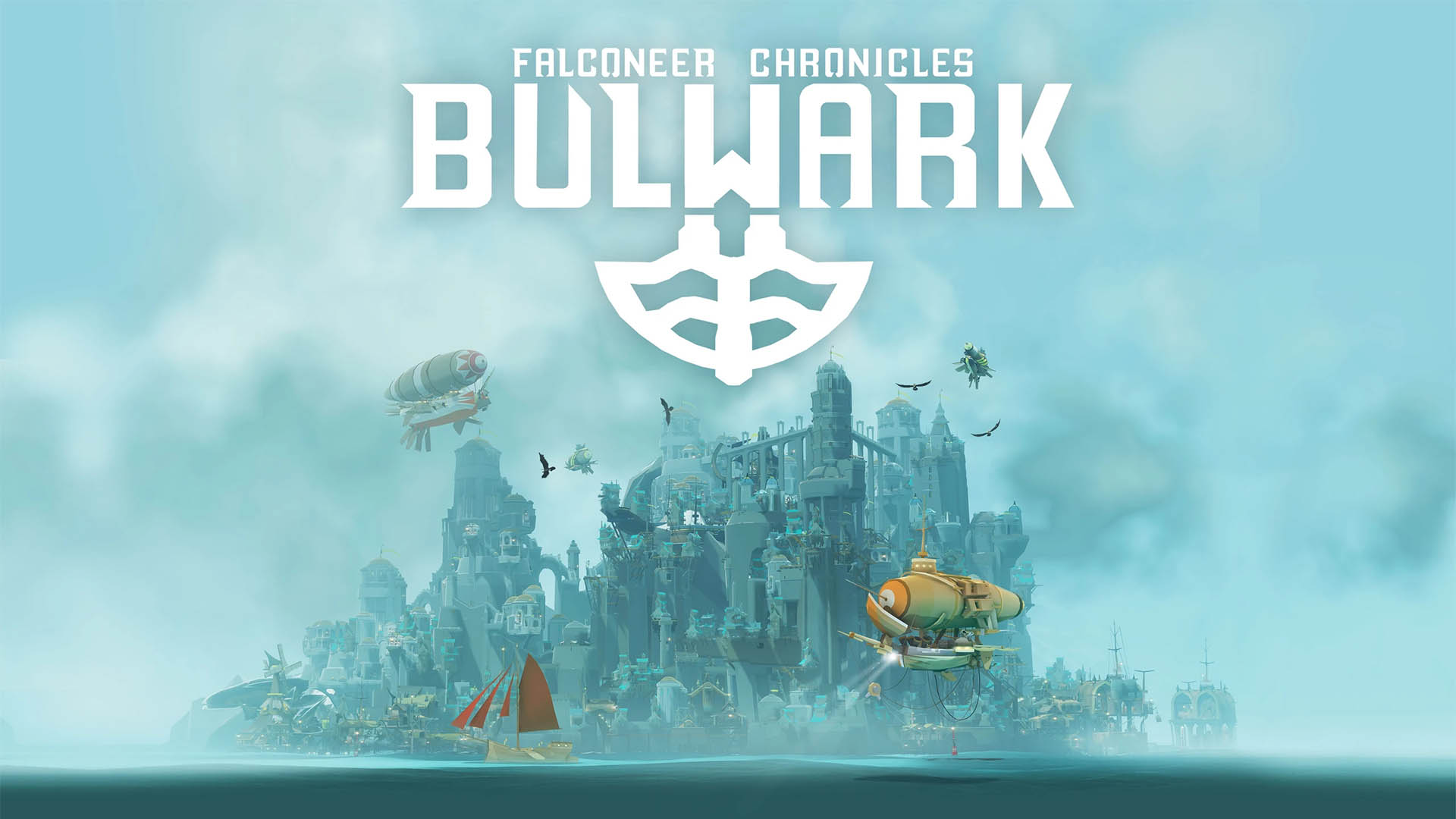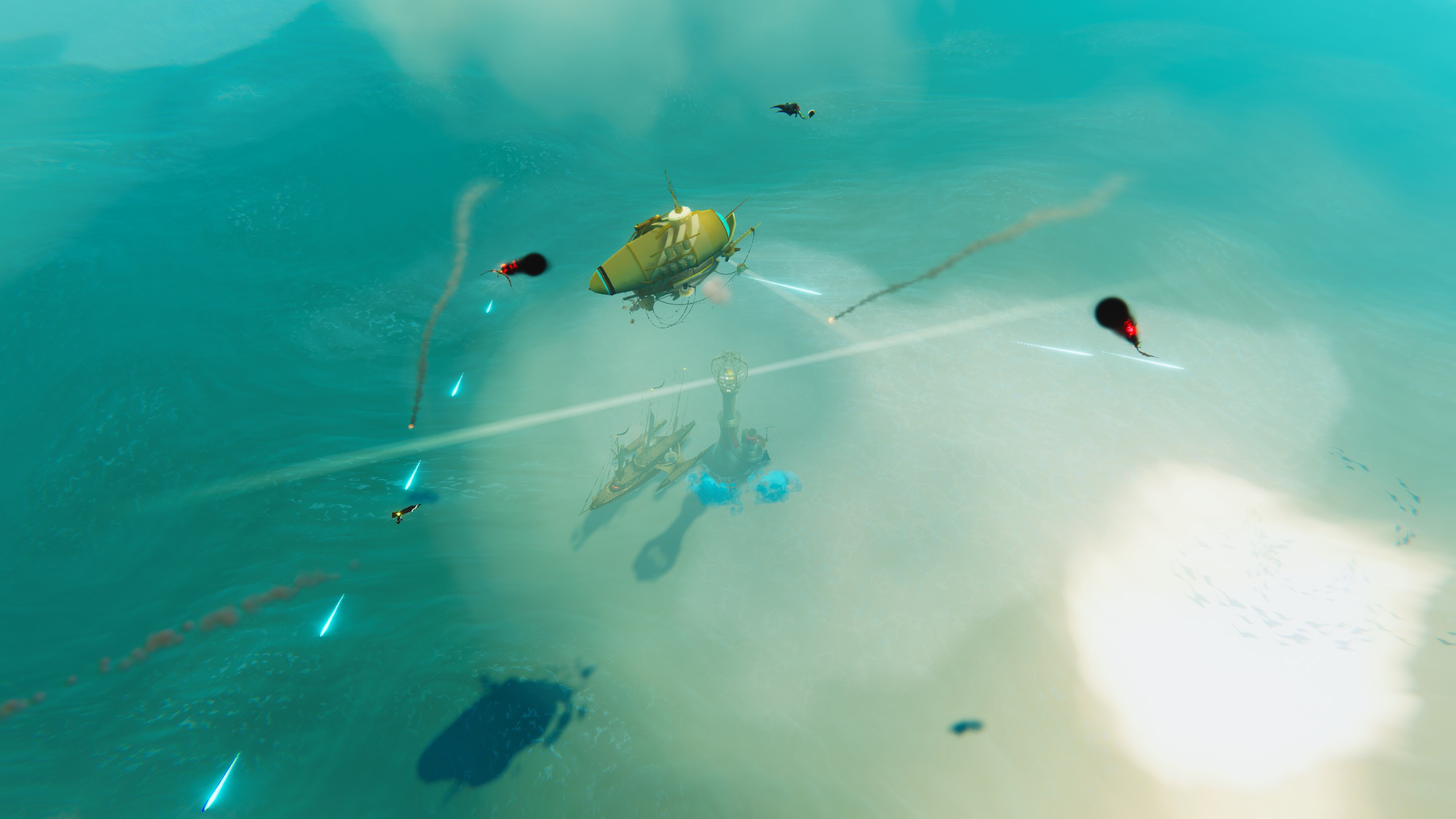
I got a chance to play Tomas Sala’s strategy-city builder spinoff Bulwark: Falconeer Chronicles, set in the same oceanic world of The Great Ursee from his 2020 game The Falconeer.
While his first game was an open world aerial combat game where you ride on the back of giant eagles, Bulwark has you actually building up and defending isolated settlements and city states scattered across the ocean.
It’s a direct sequel to The Falconeer, but you don’t need to play it to have fun here. There’s a bit of prologue that sets the foundation for the war-torn and devastated world of Bulwark, and it’s super easy to jump in and start building.

Anyone that has followed me and my coverage on Niche Gamer knows I am a sucker for strategy and/or city builder games – I played them the most in my younger years and through to today. Bulwark scratches both the strategy and city builder itch, but with some caveats.
Most strategy games have you whipping a camera around and expanding your influence, getting more resources and eventually – soldiers. Bulwark has you move from building to building, locking your movement to the “spoke system”, a radial building method.
The game actually encourages you to play with a controller from the get-go, which to me was a surprise. It didn’t take me long to get used to the very methodically planned building system and its radial outcroppings.

The only time you can freely move around the world map is with your Surveyor, a floating airship and command vehicle that also acts as your inventory. With your Surveyor you’re able to not only build more settlements, but also bring war upon your neighbors.
Tomas Sala really pushes the building in Bulwark as “kitbashing”, or for non-model-building-nerds, taking parts from various things and building new models.
I can definitely see this when I started learning how to cobble together my ideal capital city in Bulwark, as shown from the above (before) and below (after). As I experimented more and kept redoing my main city, I learned how to plan my towers, walls, and outcroppings better to be more functional and more visually pleasing.

Bulwark eschews traditional building and strategy norms by focusing entirely on a deeply connected outpost, or a heavily defended fortress. There’s no more micromanaging your resources, which at first drove me nuts, but then I started really toying with the radial building.
There’s no way to directly build vertically, per se, in Bulwark, so you have to strategically and aesthetically (second one is very important) choose where you place your outpost, towers, and your pathways (which become walls after you get stone).
Since Bulwark is set in the ocean world of The Falconeer, there’s obviously no danger to being attacked from land but doesn’t every boy love building castles with walls and towers? As I built out the main keep to my fortress I began planning what towers would be extended out for housing, another neat feature.

You can see a bit of the radial building here from my main outpost building in the center, as this was one of my earlier builds and I was just learning how to really nail good tower and outcropping layout.
After building it to the max height I started to extend out platforms that start getting populated with housing for your citizens. Outposts are the beginning of your settlements, you connect towers and resource extractors to it.
So you build out your dream ocean fortress and then what do you do? The obvious answer is recruit a handful of commanders to build out your offensive and defensive capabilities. Each commander gets you different bonuses – from extra flying units to turret defenses.
There are commanders from each of the four factions, however, and depending on which commanders you enlist the balance of influence in your empire will change over time. Maintaining a balance so that no particular faction gets too powerful is key, and faction leaders have even greater influence.

Visually, I was really blown away by the minimalist and yet picturesque feel of Bulwark. The game didn’t push my PC that hard but it easily outclasses many other indie and even bigger titles. It’s a sight to behold in motion, most especially when a raging storm crashes upon your bulwark.
Everything from the buildings to the paths to the flying units all look wonderful and as you build, there’s a satisfying feeling when you see houses and other doodads populating your bulwark.
I can tell that Sala is also a fan of city builders and wanted something that focused a bit more on actual fortress making. The soundtrack and various environmental noises are also fantastic, all of the game’s aesthetics add to a very grounded fantasy world.
I think my only complaint with Bulwark is the radial building when it comes down to building out platforms. Due to the nature of this game and its radial building, as you build out platforms they can feel a bit random. I think this ties into Sala’s focus on this having “kitbashing building mechanics.”
Extend out the radial build cursor, hit build, and keep smashing build until those platforms hopefully fill out that space so you get a really nice looking section of housing. Perhaps I was doing things wrong, but as I experimented with more vertical spaces, some of the platforms get more patchwork.

Another thing I noticed in this demo preview for Bulwark was that once I completed all the basic stuff – it basically leaves you to explore the open world. At that point it wasn’t clear to me how to get more resource extractors.
It wasn’t until I took on some local pirates and burned their outpost to the ground that I realized I got another wood extractor. As you explore and conquer or rescue more refugees from the war, you’ll get more outposts (of each faction) and more resource extractors.
The world map is huge and I expect the final release of the game will have more stuff populated in it, but for now I was mostly only able to conquer a few pirate outposts and build one secondary outpost. You can build trade harbors, though, and there’s fast travel between those and player-owned buildings.

Overall I really enjoyed my time experimenting and building meticulously in Bulwark: Falconeer Chronicles. I’ve spent around ten hours already just on this demo alone and I can easily see myself putting in a lot more time – especially as the full game will have more content.
Tomas Sala has built a masterful foundation, pun intended, with Bulwark: Falconeer Chronicles and it quickly found a spot in my shortlist to watch in the near future. Bulwark: Falconeer Chronicles is a wonderfully addicting blend of city building, strategy, and world building.
Bulwark: Falconeer Chronicles is a very satisfying building game, a genre-bending experience that fans of both strategy games and builders will easily get obsessed with – possibly even fans of kitbashing models, too.
It’s obvious that Bulwark will come to consoles, it’s built entire to play on a controller, and it does that effortlessly. Bulwark: Falconeer Chronicles is currently in development for Windows PC (via Steam).